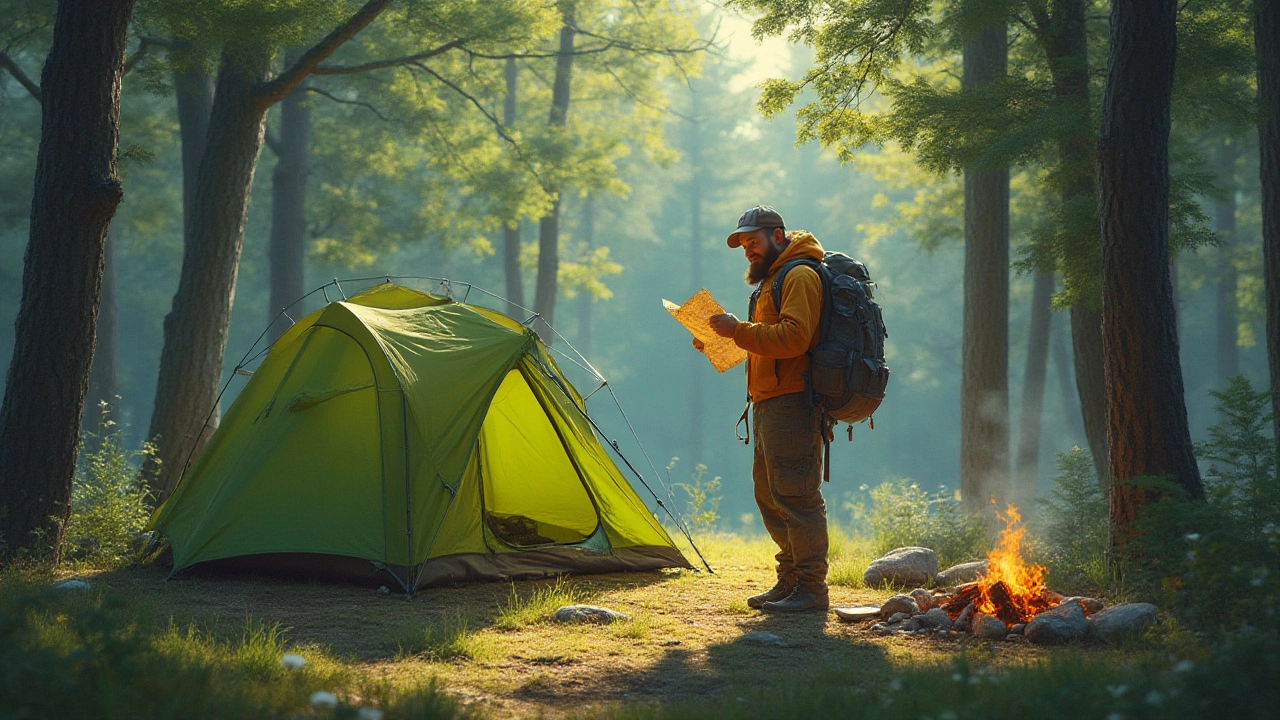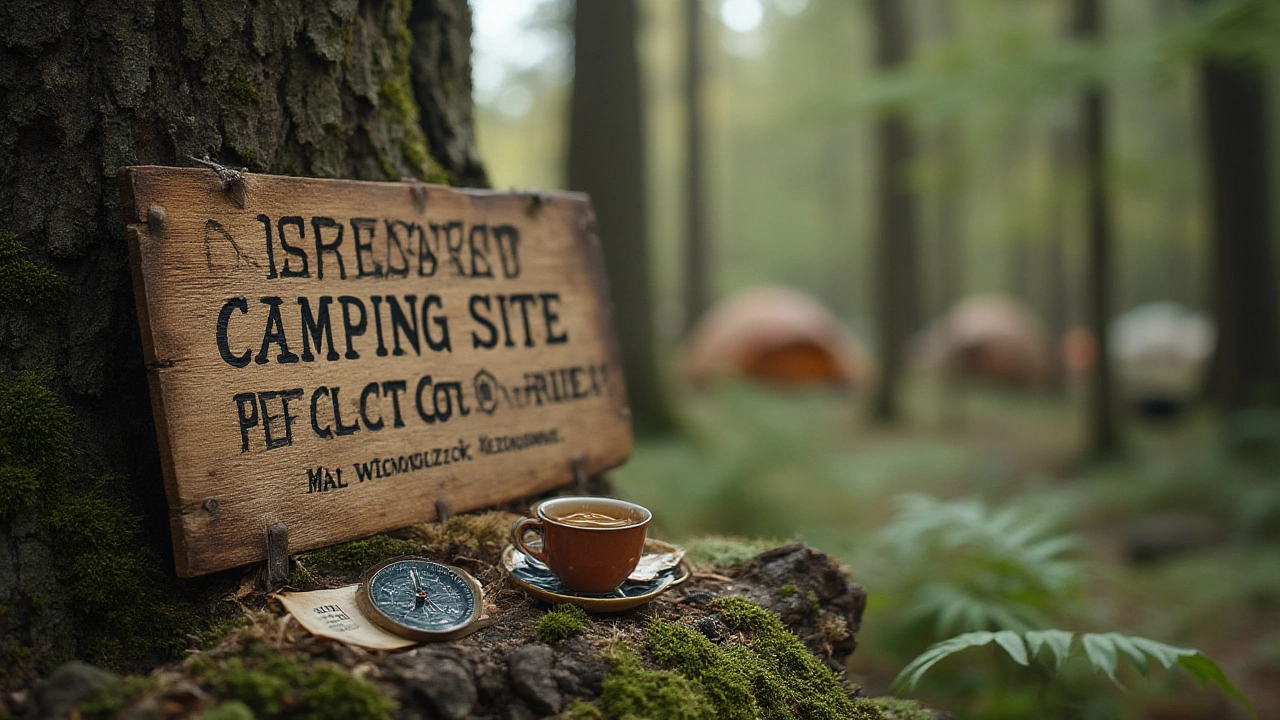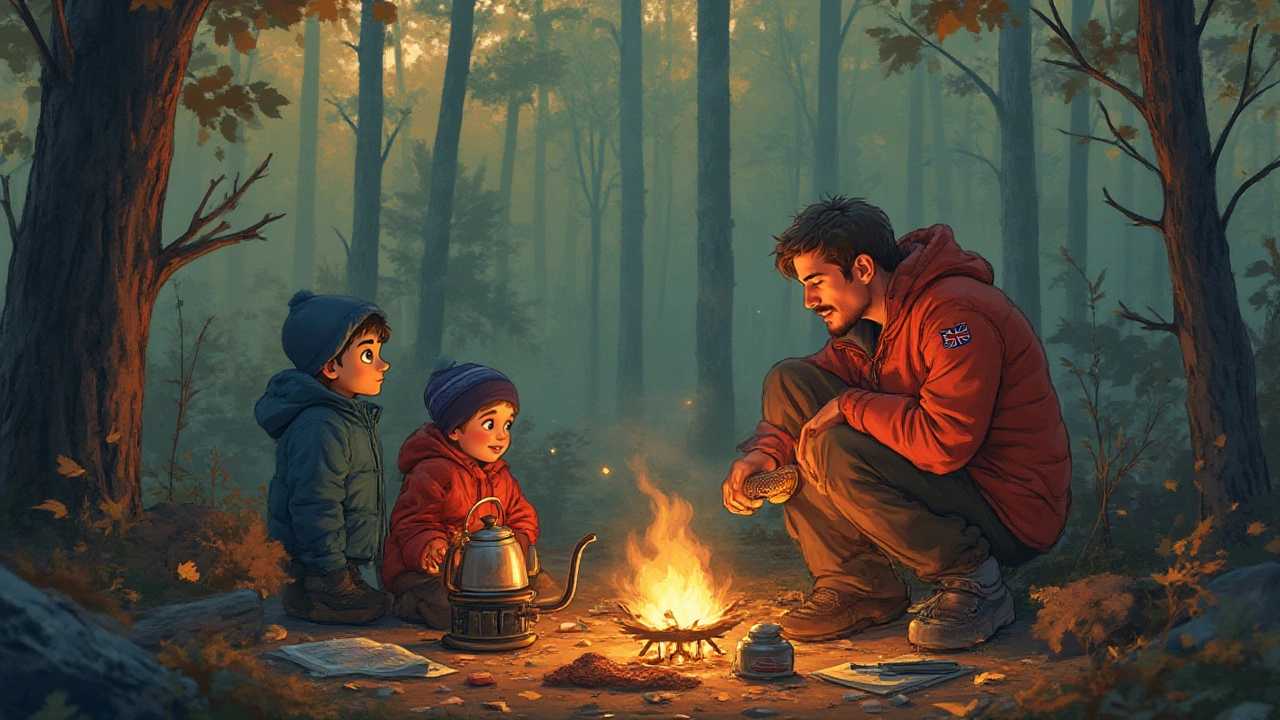Wisconsin State Forests: Tips for Free Camping and Hidden Spots
 Jul, 24 2025
Jul, 24 2025
If you’re picturing a budget-friendly escape into thick pines and shimmering lakes, you’re not alone. Loads of folks are chasing that unplugged, off-the-grid adventure—especially somewhere as wild and green as Wisconsin. But can you just roll out a tent in a Wisconsin State Forest without paying a cent? Or will the ranger turn up right after you get the campfire going?
What the Rules Say: The Nuts and Bolts of Free Camping
Let’s cut straight to the chase. In Wisconsin, camping for free in State Forests is possible, but it comes with a handful of strings attached. These forests are not the same as State Parks. In fact, Wisconsin makes a clear line between State Parks—with their family-friendly loops and signposts—and the sprawling, less-regulated State Forests.
The magic word for free camping out here is “dispersed camping.” That’s code for picking a spot away from crowds, away from any developed campground, and pitching a tent out in nature—no toilets, no picnic tables, usually no cell service. But you can’t just plop down wherever you like. State Forests like the Northern Highland-American Legion and the Chequamegon-Nicolet National Forest (technically a national forest, but popular in this conversation) are open for dispersed camping. To do it legally, you’ll usually need a permit, but it’s free—and you can get it online or at a ranger station. For others like the Kettle Moraine State Forest, you’ll typically have to use a designated campsite and pay. The difference is huge, because State Parks in Wisconsin never allow wild camping—always booked, always a fee. So, if you want to camp for free, stick to the State Forests and double-check which areas allow dispersed camping.
Some hot facts: Wisconsin manages nearly 500,000 acres of State Forest. Dispersed camping gives you access to spots no one else is using, as long as you’re at least 200 feet from water, trails, and roads (a common rule). You’ll also need to keep your tent out of sight from developed areas and move spots every 21 days (that’s the max stay on most forest lands). If you run into a blue dot on a tree—that marks the border, so don’t drop camp there.
Hidden Gems: Where to Find Free Camping Spots
Just because you can camp for free doesn’t mean every forest is open range. You need a plan. The Northern Highland-American Legion State Forest is a prime contender, with over 220,000 acres and more than 950 lakes. Spread across the Northwoods, this area is practically made for those who want to ditch the crowds. Permits for ‘primitive sites’ are free, but you do need to stop by a ranger office to fill out basic info—super simple, takes about five minutes. There, you’ll get a dump of maps and probably a warning about black bears.
The Flambeau River State Forest offers a similar system: dispersed sites, few people, and rivers perfect for canoe camping. You’ll find real solitude here, woken only by the odd loon call or slap of a beaver tail on the water. If you’re up for a trek, the Brule River State Forest is another overlooked option—great fishing and trout streams mean you get dinner and a bed in one spot.
Also worth poking around are the pockets of land called State Natural Areas inside or bordering State Forests. Some allow dispersed camping, as long as you’re following low-impact principles, but you absolutely need to check online for updates—they’re super strict about where you sleep, especially near rare plants or wildlife nests.
Locals tip: Talk to the forest rangers. They know which logging roads are open and which old fire roads have a view of a lake, even if it’s not on any map you’ll find as a tourist. Also, keep an eye out for planked boardwalks—they usually lead to hidden glacial lakes, which make the best sunrise spots for wild camping in the state.

What to Expect: Facilities, Safety, and the Realities
This isn’t glamping—you won’t find picnic tables, showers, or even a reliable place to fill up water. You’ll need to be totally self-sufficient. Bring a shovel for digging a cat hole (that’s a polite way to say “bathroom”), haul all your rubbish out, and filter or boil every drop of water you drink. Ticks, mosquitoes, and black flies can be fierce, especially in early summer, so pack the big-bottle DEET and go for light, long sleeves.
Wisconsin’s backwoods are no joke. You might hear wolves or coyotes at night, and it’s not rare to cross paths with black bears, so never stash food in your tent. Hang it up, use a bear can, or keep it locked in your car if you hike out from a road—the rangers will absolutely fine you if you get lazy. Also, remember, forest weather flips fast: hot days, icy nights, surprise thunder during what looked like a perfect weekend forecast.
If you’ve got kids, like Cyra or Keon in my family, it’s key to have downtime plans. Look for fallen logs for balance games, bring simple fishing gear, and don’t forget waterproof boots. Most of these forests have sketchy cell reception, so download offline maps before you leave town. For firewood, State rules say bring it from less than 10 miles away to avoid spreading pests. Or better still, gather dead and downed sticks lying around (never cut anything living—it’s illegal and just a bit rude).
Probably the best advice? Embrace the unpredictability. The sounds are different, the forest is full of suprises—one night we camped above Trout Lake and saw shooting stars and the shimmer of fireflies at the same time. You won’t get that at a paved, pay-to-stay campground.
Packing and Planning: What to Bring for Free Camping
You can’t wing it for this kind of trip. Alongside your tent, bring a backup tarp for rain. Cold seeps up from forest ground, so a sleeping pad with decent insulation is essential—even in July, temps can swing wild. Water is heavy, but you can’t count on finding safe streams. Bring a filter or purifier every time. I like the squeeze types; my daughter Cyra thinks it’s gross but it beats Giardia.
For food, go simple—peanut butter, cured sausages, oats, tortillas. Dry bags are king for everything; overnight storms are a given. Bring a lighter and matches, plus a mini stove for areas where fires are banned (you’ll spot posted rules at forest access points). Navigation can’t be left to your phone alone. A physical map plus a basic compass weighs next to nothing and hasn’t let me down. Remember, even the clearest trail markers sometimes vanish in State Forests after summer storms or logging runs.
Don’t skip bug netting, a headlamp, and a whistle for each person. If you get lost or your kid takes an unexpected detour, that whistle sound travels. Duct tape is my stealth MVP—patches a torn tent or blisters on a heel. A repair kit rounds out the pack (think paracord, a multitool, a needle and thread).
- free camping Wisconsin is only an option if you’re prepared for wild conditions—always double-check which forests allow it and where you can legally camp.
- Double up on snacks and water treatment options so if weather or wildlife delays you, no one’s going hungry.
- Make a habit of checking forest alerts before heading out—massive storms, wildfires, or even logging operations will shut areas suddenly.
- If you’re solo or with young ones, leave a trip plan with someone back home—where you’re going, when you’ll be back, and the license plate of your car if parking at a remote trailhead.
- Pack out everything. No toilet paper blooms or food scraps left behind—rangers and wildlife both will thank you.

Wisconsin Camping Culture: Etiquette and Going Off-Grid
The vibe in Wisconsin woods is friendly but fiercely protective. Folks will share fire starter or bug spray with strangers, but won’t hesitate to call you out if you leave rubbish or roll through a wet area with your 4WD and cause rutting. Local groups put in hundreds of hours a year clearing trails, picking up litter, and fighting to keep the forests accessible for everyone. The code is simple: leave no trace. That means fire rings scattered from previous camps should be cleaned up and never overbuilt. Glass bottles are a big no-no, and quiet hours aren’t written in some manual—but you’ll get dirty looks if you’re blasting a speaker after dusk.
If you meet locals fishing or foraging for wild ramps or mushrooms, ask questions. People are proud of their knowledge and usually happy to share a tip or send you toward a hidden lake. But be aware of hunting seasons—fall in particular—when public lands are packed with bowhunters at dawn, so swap the camo for something neon if you’re hiking or setting up camp then.
One thing you’ll notice: outsiders who treat the woods like a never-ending party aren’t welcomed back. Quiet respect, a nod to the locals, a tidy site, and a solid handshake will go a million miles. Taking nothing but photos, leaving no trace—not just a saying, but the real way you’re judged.
So yes, you can camp for free in Wisconsin State Forests if you pick your spot right and show some know-how. Some prep, a bit of patience, and respect for the land will take you further than any reservation system ever could. Just don’t forget your bug spray—and maybe a little peanut butter as backup.